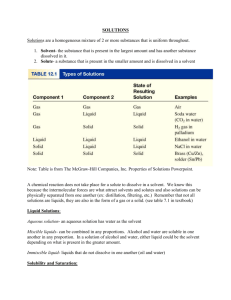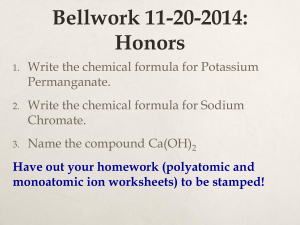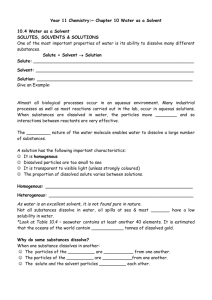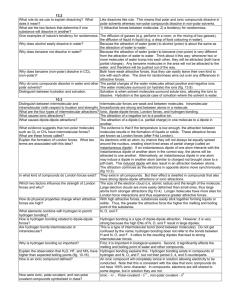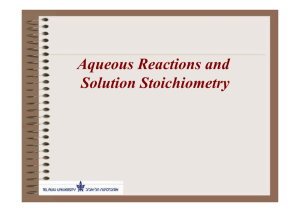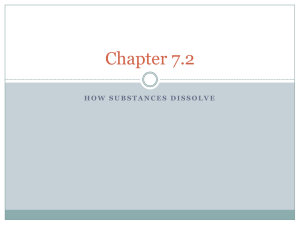FACTORS THAT AFFECT THE RATE OF DISSOLVING
advertisement
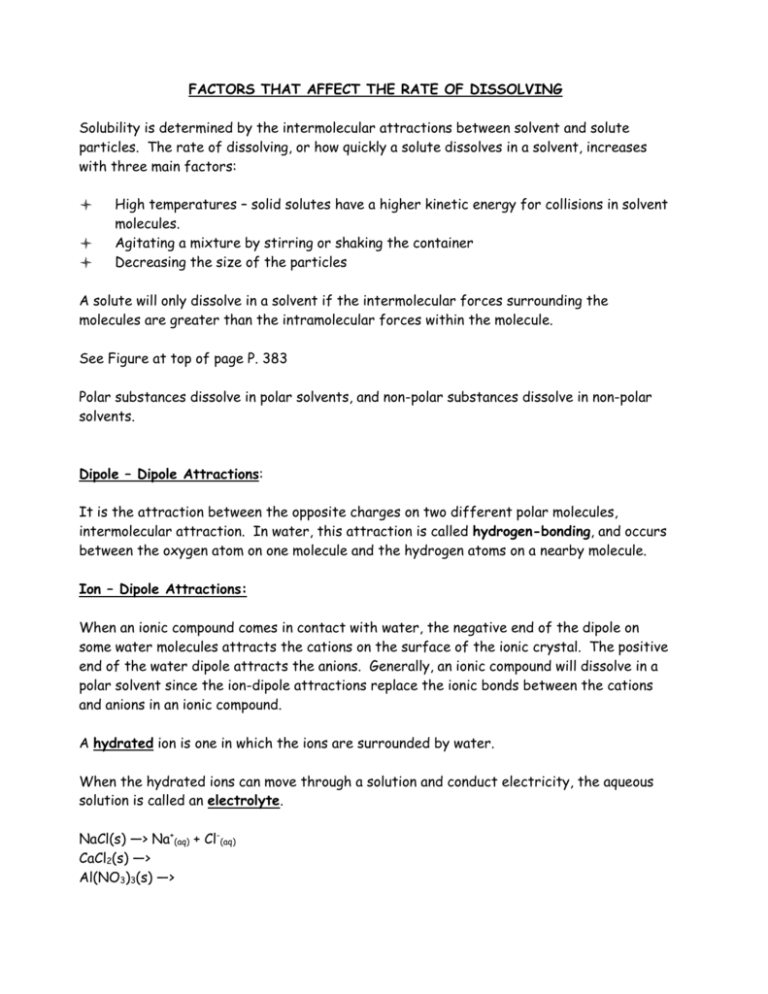
FACTORS THAT AFFECT THE RATE OF DISSOLVING Solubility is determined by the intermolecular attractions between solvent and solute particles. The rate of dissolving, or how quickly a solute dissolves in a solvent, increases with three main factors: High temperatures – solid solutes have a higher kinetic energy for collisions in solvent molecules. Agitating a mixture by stirring or shaking the container Decreasing the size of the particles A solute will only dissolve in a solvent if the intermolecular forces surrounding the molecules are greater than the intramolecular forces within the molecule. See Figure at top of page P. 383 Polar substances dissolve in polar solvents, and non-polar substances dissolve in non-polar solvents. Dipole – Dipole Attractions: It is the attraction between the opposite charges on two different polar molecules, intermolecular attraction. In water, this attraction is called hydrogen-bonding, and occurs between the oxygen atom on one molecule and the hydrogen atoms on a nearby molecule. Ion – Dipole Attractions: When an ionic compound comes in contact with water, the negative end of the dipole on some water molecules attracts the cations on the surface of the ionic crystal. The positive end of the water dipole attracts the anions. Generally, an ionic compound will dissolve in a polar solvent since the ion-dipole attractions replace the ionic bonds between the cations and anions in an ionic compound. A hydrated ion is one in which the ions are surrounded by water. When the hydrated ions can move through a solution and conduct electricity, the aqueous solution is called an electrolyte. NaCl(s) —> Na+(aq) + Cl-(aq) CaCl2(s) —> Al(NO3)3(s) —>
